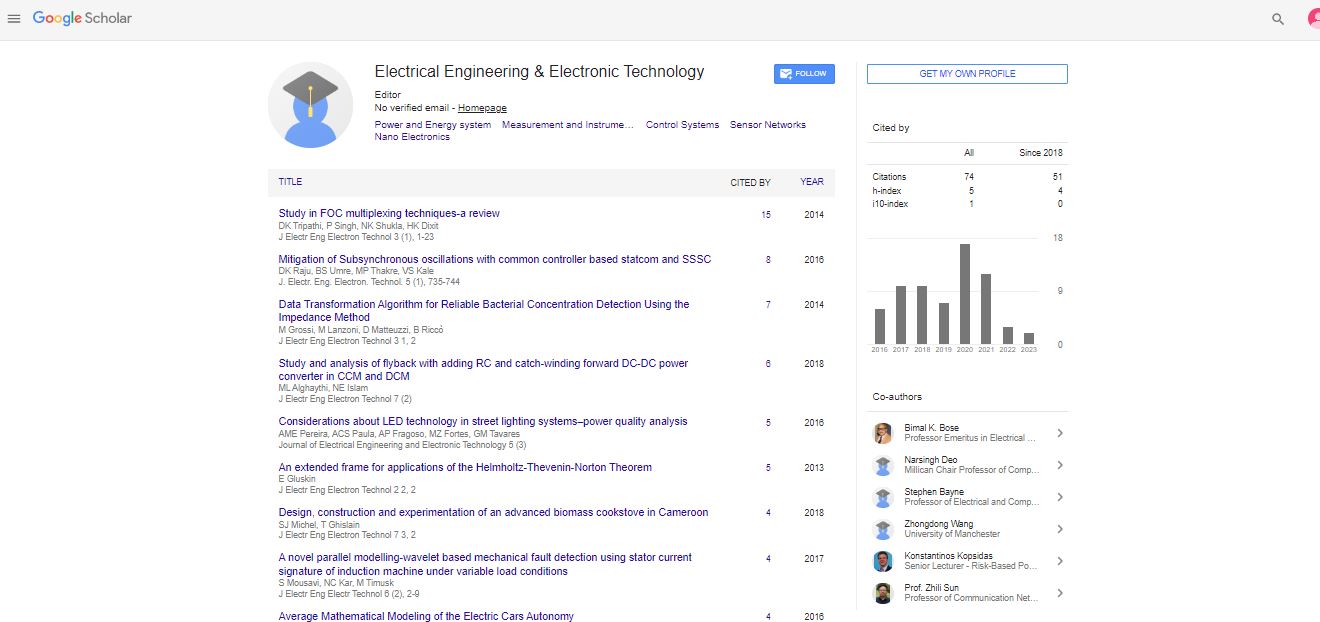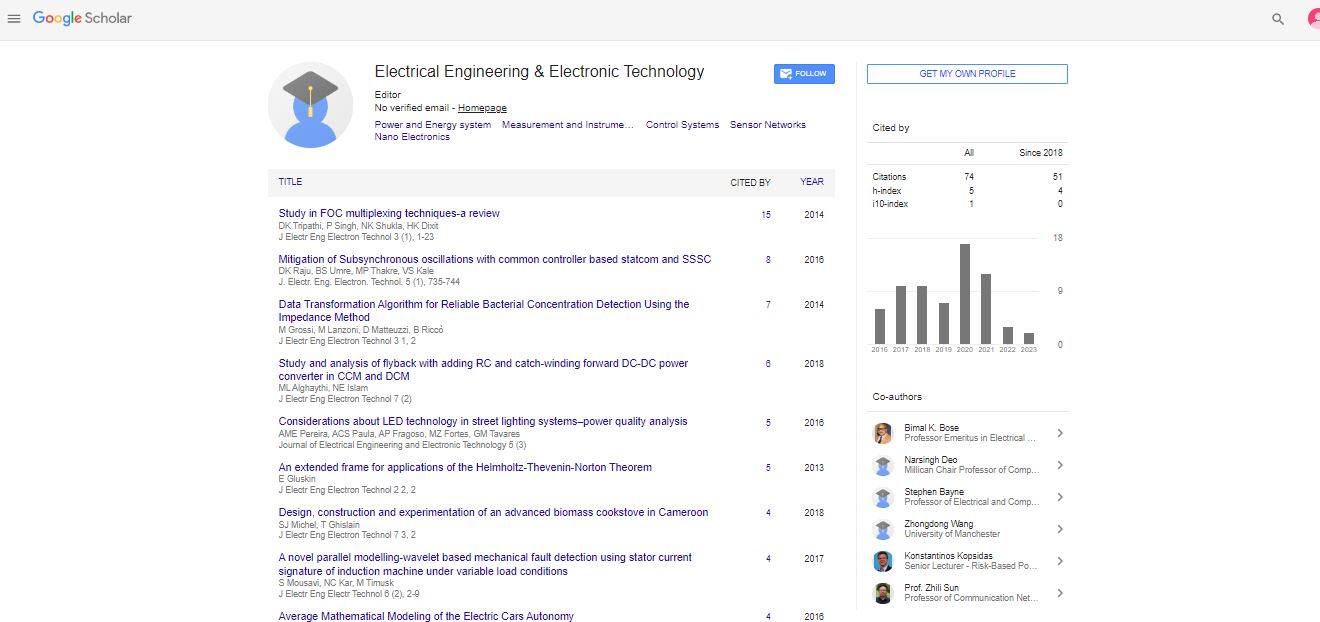Research Article, J Electr Eng Electron Technol Vol: 3 Issue: 1
Fast and Accurate Circle Detection Algorithm for Porous Components
| Song Liu*, De Xu1, Dapeng Zhang and Zhengtao Zhang | |
| Research Center of Precision Sensing and Control, Institute of Automation, Chinese Academy of Sciences, Beijing 100190, China | |
| Corresponding author : Song Liu Research Center of Precision Sensing and Control, Institute of Automation, Chinese Academy of Sciences, Beijing 100190, China E-mail: sdliusong@outlook.com |
|
| Received: July 01, 2013 Accepted: October 20, 2014 Published: October 22, 2014 | |
| Citation: Liu S, Xu D, Zhang D, Zhang Z (2014) Fast and Accurate Circle Detection Algorithm for Porous Components. J Electr Eng Electron Technol 3:1. doi:10.4172/2325-9833.1000112 |
Abstract
Fast and Accurate Circle Detection Algorithm for Porous Components
In this paper, a fast and accurate circle detection algorithm is presented. The proposed algorithm satisfies the application requirements on accurate circle localization for porous components with excellent real-time performance. The core idea of the algorithm is to cluster circle edge points by an easy-to-implement image analysis technique. Specifically, the original image is firstly down sampled with uniformly spaced grid to form an image with smaller size. The new image is then analyzed, pixel by pixel, to find the candidate grid points located inside the circle on the original image. Secondly, candidate grid points are evaluated to eliminate the ones which are not inside real circles. Thirdly, grid points located inside one circle are regrouped according to minimum distance between circles. These remaining grid points are the reference points to cluster circle edge points. Finally, parameters for a specific circle including radius and center coordinates are calculated based on the edge points belonging to that circle with Random Sample Consensus (RANSAC) algorithm. Experiment results demonstrate the efficiency of the proposed circle detection method.
 Spanish
Spanish  Chinese
Chinese  Russian
Russian  German
German  French
French  Japanese
Japanese  Portuguese
Portuguese  Hindi
Hindi 
